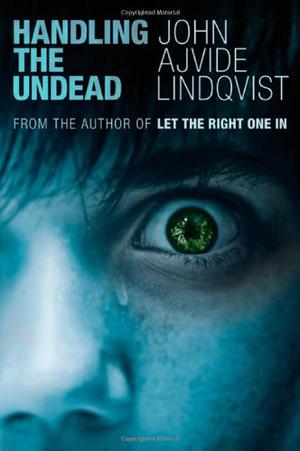In the realm of contemporary literature, few themes evoke as much intrigue and complexity as that of the undead. With meticulous precision, “Handling the Undead” beckons readers into a narrative that transcends the boundaries of traditional horror. This novel promises not just a mere exploration of the supernatural but a compelling shift in perspective that elicits profound contemplation about life, death, and what lies beyond. It is a work that abandons the pedestrian conventions of its genre, opting instead for a rich tapestry of psychological and philosophical inquiry.
The premise is deceptively simple. Set in a world where the dead inexplicably return to life, the novel deftly navigates the societal ramifications of such an occurrence. This is not merely a tale of zombies staggering aimlessly; rather, it poses intriguing questions about identity and humanity. What does it mean to truly live? How do our relationships evolve when the concept of death is rendered ambiguous? The author engages readers in a fascinating discourse that invites them to examine their own notions of existence and the ephemeral nature of life.
At its core, “Handling the Undead” is an exploration of grief and the human condition. The narrative is punctuated by an array of characters, each encapsulated by their personal struggles and emotional landscapes. The protagonist’s journey is laden with existential weight, reflecting the tumultuous quest for understanding and acceptance in a world that has become irrevocably altered. As the story unfolds, readers find themselves grappling with the uncomfortable yet exhilarating idea that the boundaries between life and death are not as rigid as they once believed.
One of the most captivating aspects of this narrative is its ability to juxtapose the grotesque and the mundane. The undead are not merely horror tropes; they are manifestations of unresolved issues, lingering regrets, and unspoken desires. This unique angle adds a layer of depth that enriches the storytelling experience. For instance, scenes depicting the interaction between the living and the undead are laden with emotional intensity, inviting readers to ponder the implications of these interactions. The characters face a moral and ethical dilemma: how do we treat those we once loved when they return, altered yet familiar?
The author’s prose is imbued with vivid imagery and striking metaphors that elevate the narrative beyond mere entertainment. Every page is alive with sensory details, drawing readers deeper into a world that feels both strangely foreign and achingly familiar. The atmosphere is palpable; one cannot help but feel the weight of uncertainty that envelops the characters. As the story progresses, the tension builds, creating an ineffable sense of urgency that compels readers to keep turning pages, desperate to uncover the resolution to the myriad questions posed throughout.
Furthermore, “Handling the Undead” excels in its character development. Each character is not just a vessel for the plot but rather a deeply flawed individual navigating the complexities of their reality. The interactions between them are intricately woven, reflecting the multifaceted nature of human relationships. The bonds of love, despair, and unresolved conflict resonate throughout the narrative, offering readers a multifarious emotional experience. Such rich characterization ensures that every reader can find a piece of themselves reflected in the story, igniting empathy and understanding for even the most morally ambiguous figures.
The thematic exploration of societal norms and existential dread is brilliantly executed, prompting introspection about our own perspectives on life, death, and the taboo associated with both. The text challenges the reader to confront their own prejudices towards the undead, prodding at the very essence of what it means to be human. What do we owe to those who have departed? How do we redefine our connections when faced with the undead returning to our lives? Each question leads to another, creating an intricate web of inquiry that invites curiosity and introspection.
In a world rife with sensationalized depictions of the undead, this novel dares to shift the lenses through which we perceive death and resurrection. Instead of craving genre-standard thrills, readers will find themselves seeking philosophical enlightenment. The narrative navigates the paradox of hope and despair, illuminating the beauty found within the grotesque. It challenges us to reevaluate our preconceived notions about mortality and what it means to truly live and love.
As “Handling the Undead” draws to a close, the resolutions offered are not neatly wrapped in a bow; instead, they provoke further contemplation. The reader is left with a lingering sense of ambiguity—a reminder that some questions remain perpetually unanswered. This lingering curiosity is perhaps the most potent aspect of the novel. The pages resonate long after the final sentence, urging an examination of one’s own beliefs and values. The reader is invited to ponder: if the undead returned, how would our lives, our relationships, and our understanding of existence evolve?
In conclusion, “Handling the Undead” is an exceptional exploration that deftly intertwines the macabre with the profound. It proffers a narrative that is rich in emotional depth and philosophical musings. Through its engaging characters, thought-provoking themes, and evocatively charged prose, the novel promises a transformative reading experience. Each encounter with the undead invites introspection, piquing curiosity in the reader to further investigate the unexplored corners of their own lives and perceptions. This narrative serves as a potent reminder of the complexities of human existence and the relentless pursuit of understanding in the face of the unfathomable.
